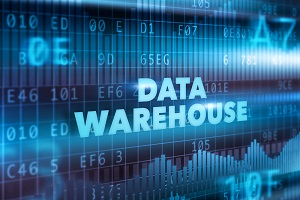In this contributed article, Tom Scott, CEO of Streambased, outlines the path event streaming systems have taken to arrive at the point where they must adopt analytical use cases and looks at some possible futures in this area.
Navigating Data Lake Challenges: Governance, Security, and GDPR Compliance
In this contributed article, Coral Trivedi, Product Manager at Fivetran, discusses how enterprises can get the most value from a data lake. The article discusses automation, security, pipelines and GSPR compliance issues.
Why Do We Prefer ELT Rather than ETL in the Data Lake? What is the Difference between ETL & ELT
In this article, Ashutosh Kumar discusses the emergence of modern data solutions that have led to the development of ELT and ETL with unique features and advantages. ELT is more popular due to its ability to handle large and unstructured datasets like in data lakes. Traditional ETL has evolved into cloud-based ETL which allows rapid batch processing, scalability, savings, and simplicity while maintaining security, governance, and compliance.
Video Highlights: Modernize your IBM Mainframe & Netezza With Databricks Lakehouse
In the video presentation below, learn from experts how to architect modern data pipelines to consolidate data from multiple IBM data sources into Databricks Lakehouse, using the state-of-the-art replication technique—Change Data Capture (CDC).
Maximizing Data Lake Utility with Query Optimization
In this contributed article, editorial consultant Jelani Harper highlights the recent acquisition of Varada by Starburst in terms how the deal provides Starburst’s platform two pivotal benefits. On the one hand, it employs cognitive computing to intelligently index data at scale. On the other, it has caching capabilities that make queries even more responsive for swiftly retrieving answers for informed decision-making, analytics, and applications.
From Data Warehouses and Data Lakes to Data Fabrics for Analytics
In this contributed article, Kendall Clark, Founder and CEO of Stardog, discusses how data fabric is fast-becoming the data architecture foundation for analytics and how it is revolutionizing the $50 billion data lakes/warehouse market. Supported by real-word examples, the article explores how technologies such as expressive semantic modeling, knowledge graph, and data virtualization are connecting disparate data lakes to streamline data pipelines, reduce dataops costs and improve analytics insight.
Data Warehouse Costs Soar, ROI Still Not Realized
Enterprises are pouring money into data management software – to the tune of $73 billion in 2020 – but are seeing very little return on their data investments. According to a new study out from Dremio, the SQL Lakehouse company, and produced by Wakefield Research, only 22% of the data leaders surveyed have fully realized ROI in the past two years, with most data leaders (56%) having no consistent way of measuring it.
How to Overcome Obstacles in Data Lake and Warehouse Strategies: 3 Best Practices for Enterprise Architects
In this special guest feature, Kimberly Read, the enterprise architect at Faction, suggests that to support the business case for multi-cloud, enterprise architects can benefit by addressing three primary considerations. Multi-cloud initiatives—drawing on services from public and private clouds—can help organizations stay ahead of the curve.
Interview: Prat Moghe, CEO of Cazena
I recently caught up with Prat Moghe, CEO of cloud data lake leader Cazena to get his take on how getting off the ground with cloud data lakes continues to be a major frustration for enterprises. We’re seeing such deployments taking at least six months and millions of dollars of annual spend for in-house development and management. There’s got to be a better way. Gartner has estimated the failure rate of big data projects as high as 80%. What can you do about companies that stubbornly hang on to legacy data strategies, using analytics/BI approaches that put them ever-more behind competitors who are modernizing their data stack with AI/ML/etc? In this interview, we’ll get some valuable perspectives for you to follow in accelerating your time-to-analytics.
Protecting Your Data Lake Requires a New Mindset
In this contributed article, technologist Bernard Brode discusses how protecting your data lake requires a new mindset. Some have questioned whether they actually need a data lake. While the answer is often positive, this doesn’t mean you’re doomed to the certainty of successful cyber attacks – as long as you are not relying on hope as a strategy, that is.








